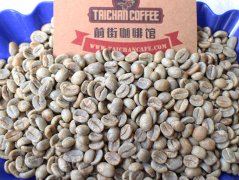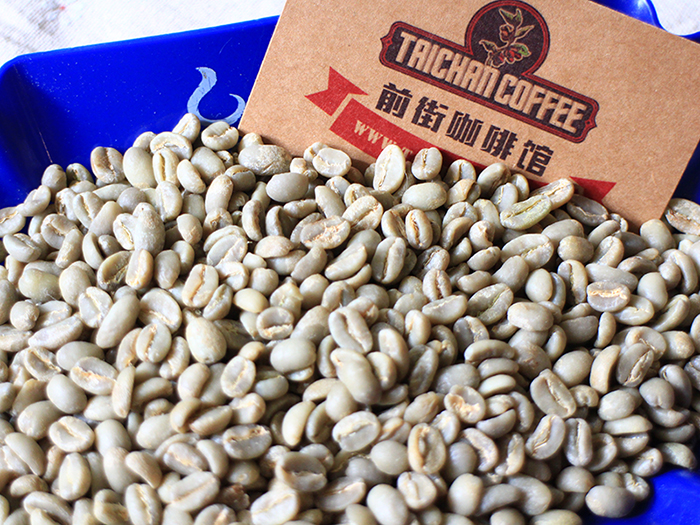What are washed beans? Costa Rica Tara Pearl Diamond Villa washing SHB Kaddura seed beans
Costa Rican coffee plants were imported from Cuba in 1779 and exported for the first time in 1820. There are now about 32000 coffee farmers, with an average of less than 10000 yuan per farmer. Costa Rica has a population of 410 million (2006), an active coffee planting area of 82500 hectares, an annual output of 1.7 million bags (per bag of 60kgs), and an annual consumption of 38 bags in the country, with an average annual consumption of 5.5kgs per person, which is higher than that of Japan (4kgs). At present, the average Taiwanese is only slightly higher than 1kg. Costa Rica is the first country where coffee was first introduced into Central America. It has a long history. The coffee organization is self-produced and the marketing system is complete. Because there are many volcanoes in China and the United States, and there are light and natural weather of the land, the coffee produced has the characteristics of micro-climate conditions in the Pacific and Atlantic currents and seas at the same time. In terms of quantity and quantity, Costa Rican coffee has always been recognized by the world, and it is regarded as one of the world's high-grade coffee. Costa Rican coffee has been planted for more than a century. It was first planted on the slopes of the Poas and Barva volcanoes. Today it is known as the Central Valley (CentralValley). The seven main coffee producing areas are divided from northwest to south, along the central plateau of the interior. The fertile volcanic ash, abundant volcanic ash and moderate rainfall in Costa Rica's volcanic terrain, as well as the steady rainfall, are all one of the factors that make coffee a major agricultural product in Colombia. The seven major production regions are: Tarrzu, TresRios, Orosi, CentralValley, WestValley, Turrialba and Brunca.
The cultivation of coffee in Costa Rica has a long history. In the past 10 years, the new "dry" treatment has become a trend. The new method of "honey treatment" is called "honey treatment", which uses the scraping machine to complete the scraping degree of the pulp.
Important Notice :
前街咖啡 FrontStreet Coffee has moved to new addredd:
FrontStreet Coffee Address: 315,Donghua East Road,GuangZhou
Tel:020 38364473
- Prev

What is washing treatment? PB raw pearl beans from the Kilimanjaro alpine region of Tanzania, Africa
Mount MtKilimanjaro, the highest peak in Africa, stands in the northeast of Tanzania, known as Trusteeship after World War I. it was once under British colonial rule and became independent in 1964. Bourbon strain coffee was first introduced and planted in 1893, raw beans were mainly treated with water washing, and high-quality high-altitude Tanzanian coffee was of good quality, just like Kenya has active and bright acid performance. Tanzania
- Next

What is half-sun? Brazilian boutique raw beans in season fresh coffee raw beans bourbon species South Minas producing area
Brazil is flat, coffee farms are mostly about 600-1000 meters above sea level, flat and monotonous landforms, lack of micro-climate, and are accustomed to planting unshaded trees, resulting in the development of Brazil's unique soft bean flavor of low sour taste, heavy nutty flavor, chocolate sweet and mellow, but slightly woody and earthy, flower and orange fragrance is not obvious. But the Serrado platform and Nanmi west of Minas
Related
- Guji coffee producing area of Guji, Ethiopia: Humbela, Shakiso, Wulaga
- What is the most expensive variety of Qiloso in BOP multi-variety group?
- How to store the coffee beans bought home?
- Why are Yemeni coffee beans so rare now?
- Ethiopian Sidamo all Red Fruit Sun Sun Santa Vini Coffee beans
- SOE is mostly sour? What does it mean? Is it a single bean? what's the difference between it and Italian blending?
- Is Italian coffee beans suitable for making hand-brewed coffee?
- How to choose coffee beans when making cold coffee? What kind of coffee beans are suitable for making cold coffee?
- Just entered the pit to make coffee, what kind of coffee beans should be chosen?
- Can only Japan buy real Blue Mountain Coffee? What are authentic Jamaican Blue Mountain coffee beans?

